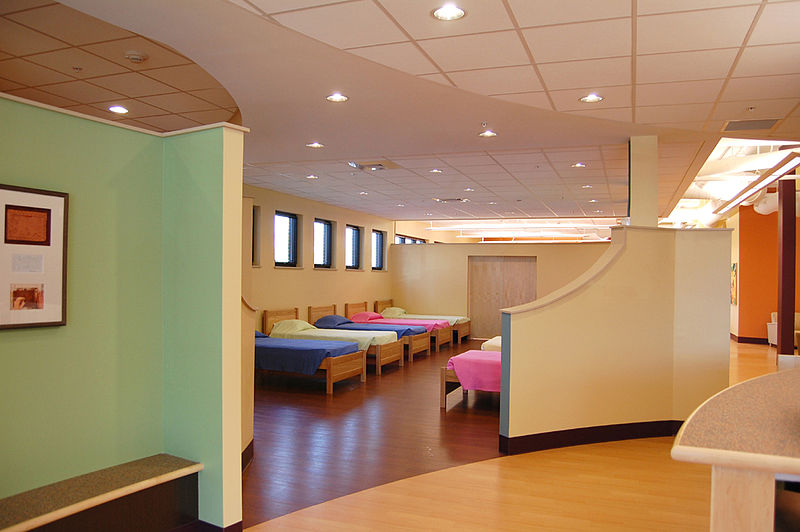It was never my desire to become involved in the management of my shelter, the Community for Creative Non-Violence (CCNV). When I arrived there in April 2003, my only concern was finding a place that could accommodate my special health requirements. I had already had one disastrous experience at another regular day shelter, an experience that proved to me that I could not go just anywhere. I considered myself fortunate to have found a livable situation at CCNV and I was not seeking to get into a power struggle. I also was not functional enough to try to do so; I had too many of my own problems to manage without also locking horns with an organization that clearly had a long history.
Now, in 2005, much has changed. I am now a staff member. As a CCNV employee, I know that the claim made by Robert Egger of the D.C. Central Kitchen on January 24, at a televised Public Roundtable Committee meeting on homeless with the D.C. City Council, was false. Mr. Egger said CCNV has not performed case management. However, as someone actively involved in the management of CCNV and who sees what goes on in the organization, I must correct this characterization.
When I first arrived at CCNV, I was admitted to the infirmary. I had just been released from Providence Hospital and I was still in very shaky condition. Shortly thereafter, a CCNV case manager did a thorough interview with me. The case manager wasted no time in giving me referrals to resources in the community that helped me replace important lost documents and access other badly needed services. That case manager was instrumental in helping me begin to rebuild my life.
I have seen other people come through CCMV, and, with the help of shelter staff, get their lives back together and move on. CCNV is doing more than merely warehousing homeless people. Certainly, not all the services CCNV offers are actually contained within the shelter. In fact, I would argue that it’s unrealistic to expect a large urban shelter to be highly specialized, able to cater to the many specific needs of all its resident’s The Federal City Shelter building, for example, can host up to 1,000 residents—no small number. The high volume of residents at city shelters is precisely why there are many core service agencies throughout the District. These agencies are better suited than shelters to address an individual’s particular needs. But knowing how to reach the services these agencies offer can be confusing, and that is where case manager at shelters come in handy. CCNV has always had case managers who are well-equipped to direct residents toward vital services.
Mr. Egger said, as have many older critics, that paid professionals could better run CCNV and urged the city to install them as soon as possible. However, if city leaders were to review the credentials of the people currently in charge of CCNV, the might be very surprised. Some of the people who lead CCNV are amazingly well qualified for their positions. That is not to say that that the organization has no weaknesses. Most organizations could purge themselves of a few weak links. Having worked as a contractor in more than one government agency, I know that all too well.
Moreover, every organization has flaws as well as redeeming qualities – there are no absolutes at either end of the spectrum. Chapman Todd, director of Catholic Charities, was also present at that January meeting of the Public Roundtable Committee. Catholic Charities managers organizations that service the Federal City Shelter and also runs the shelter on New York Avenue, which has been touted as a model, state-of-the-art facility. However, eight residents of the New York Avenue facility criticized the shelter at the January meeting. One of those eight resident was a former CCNV resident. In his testimony, he stated that at CCNV, the help came “from the heart.”
Given the very broad spectrum of issues that concern and affect homeless people, it is unrealistic to expect any one organization to have the magic formula for addressing all the needs of each client it serves. Neither CCNV nor other shelters in the District are capable of such miracle working. Rather, addressing the many needs of homeless people must involve a coordinated effort among the many organizations in the city that are working to achieve the common goal of empowering the homeless to return to mainstream society. That was the understood goal of the Public Roundtable Committee discussion on January 24, and it is a goal to which all the organizations in the city must aspire.
Despite evidence of some misperceptions about the role CCNV and other shelters play in providing case management and other services, I came away from the Public Roundtable meeting feeling – as did many – that there is at least a willingness on part of city leaders to resolve the problems that face the homeless and to work toward eliminating chronic homelessness in the District in the future. That was a feeling I did not have when I walked into the meeting at the beginning of the day, and that attitude change is already progress itself.








